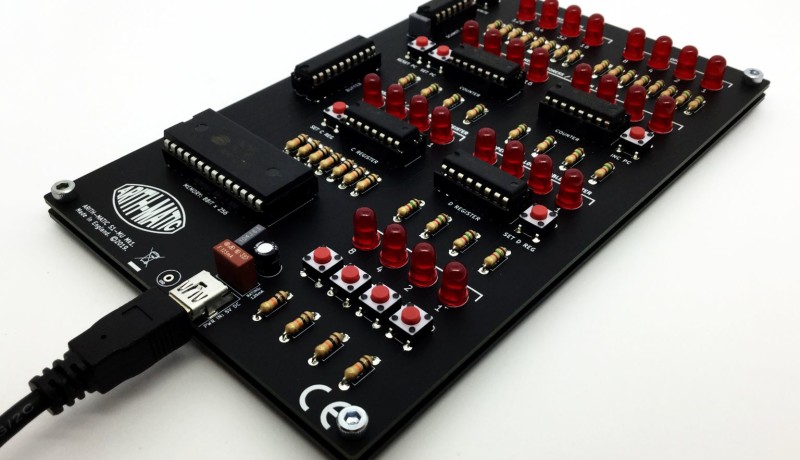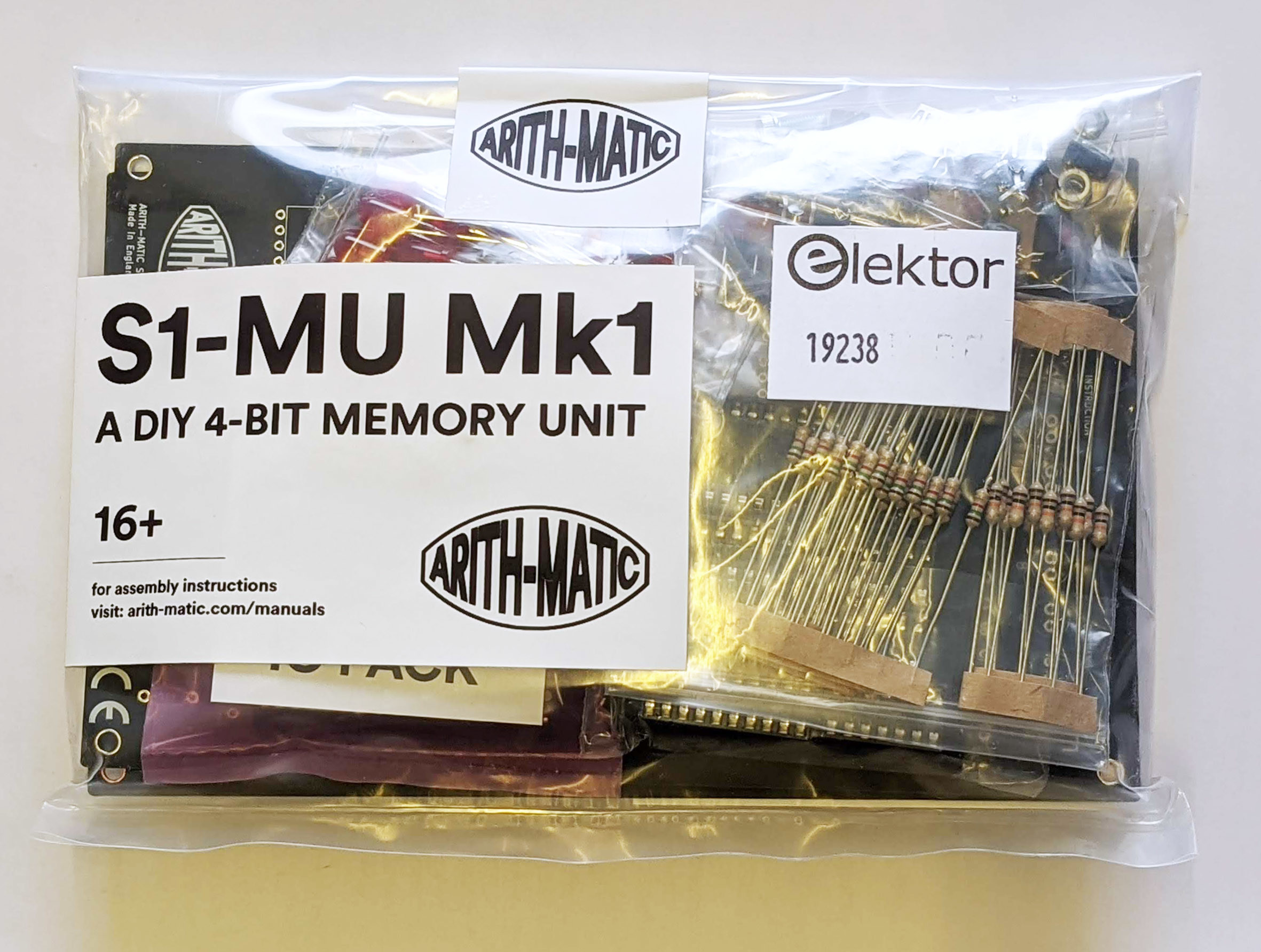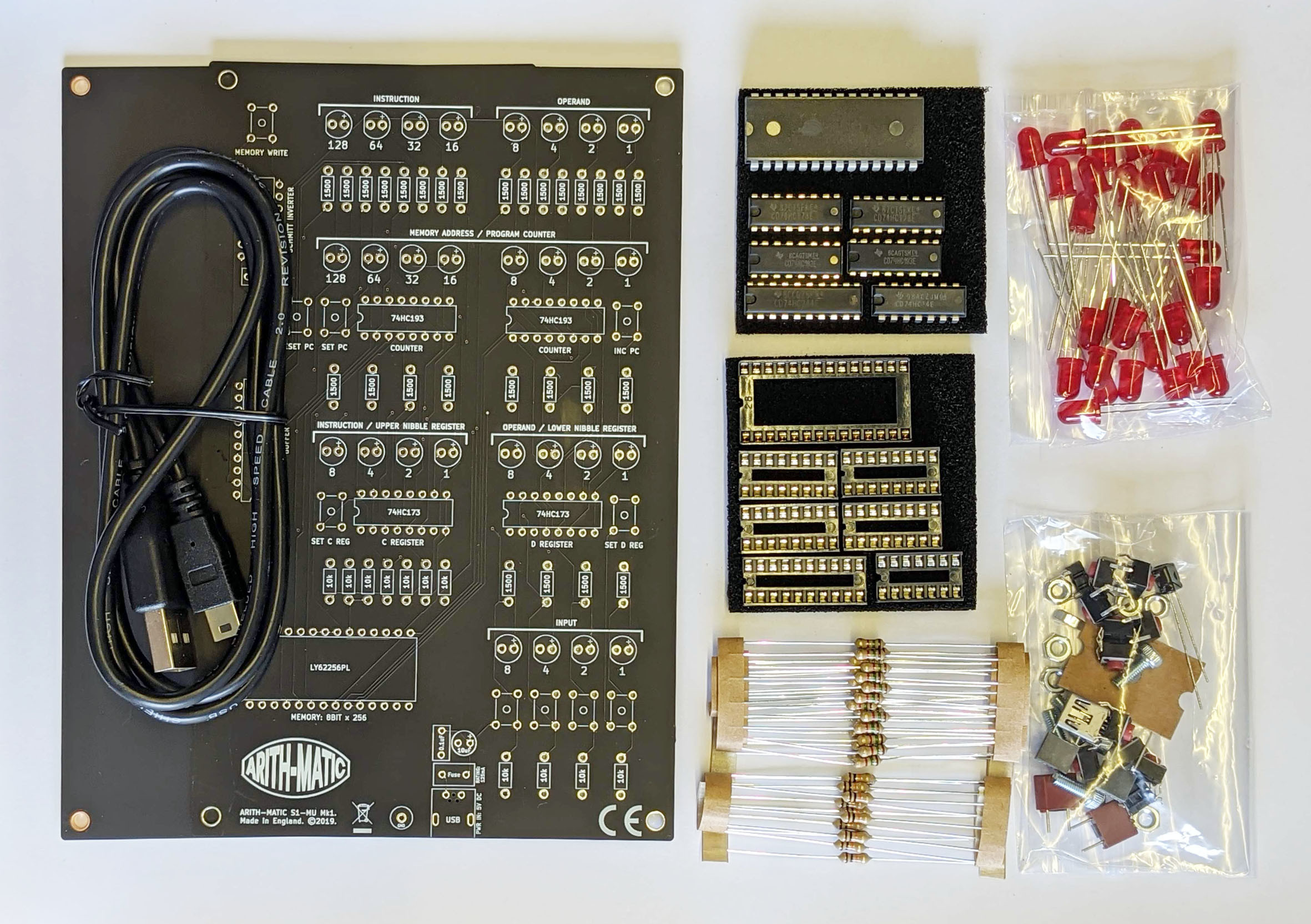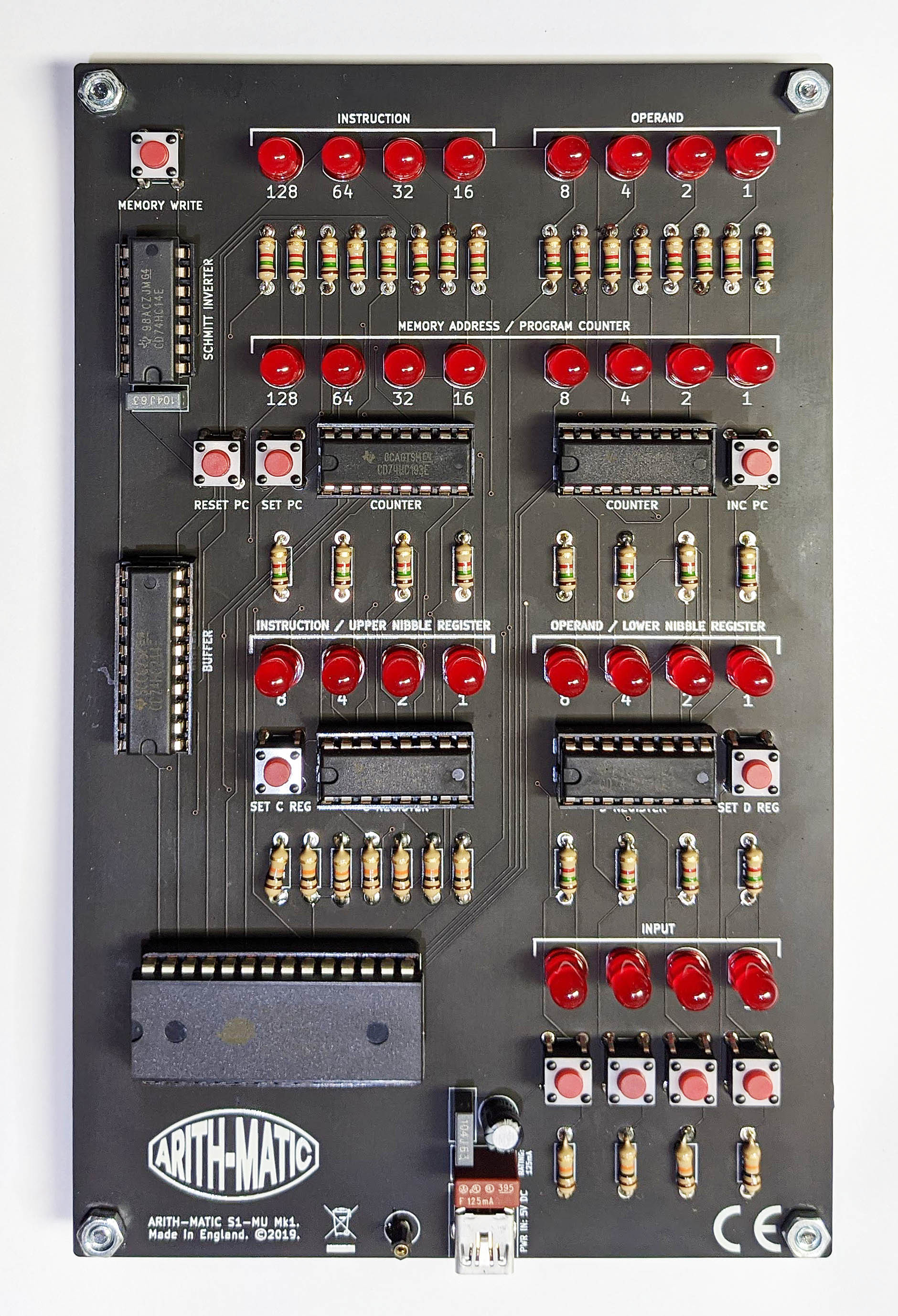ARITH-MATIC S1-MU Memory Model: How Does a Storage System Work?
on

When I saw the black circuit board with many LEDs and conventional, socketed ICs in the Elektor store, I became curious. A euro card full of electronics in the ’70s style of the last century — did time stand still?
The first sentence of the description: “The S1-MU Mk1 is a beautifully engineered 8-bit memory unit designed with classic 7400 series ICs.” That makes it clear what the whole thing is intended for. So I ordered a kit because I like to solder and also like to explain to not so tech-savvy contemporaries how their cell phones work.
Acquire knowledge
You are an Elektor reader, so I can safely assume that you can distinguish a bit from a byte, right? And even Von Neumann architecture shouldn’t be a foreign concept for an electronics technician who has completed his training, correct? So, if you know that practically all modern computers store commands and data for a program in a kind of “mixed” way in memory, and if you know how memory is addressed, read and written in principle, and if you know how a flip-flop or a counter works, then you might think that you won’t learn a lot from this kit.
But the kit could still be something for you. Why? Because it is helpful when you can both learn computer concepts and experience out how memories work in concrete terms on hardware. Such a circuit board is especially useful when you are teaching. For example, it is helpful when you as a computer science teacher are standing in front of a class of young students who are all more or less good at using PCs, laptops, and smartphones — some might even have tablets tucked under their arms with smartwatches flashing on their wrists — but who do not really know what is going on inside these marvels of technology.
The circuit board is also exactly right when you are a lecturer with "newcomers" at technical colleges and universities, because then you can neither assume that (all) students know where to touch a soldering iron, nor how semiconductors and the modern computer chips based on it work. With such “really functioning” demo boards, this is conveyed much more impressively than just on a screen.
ARITH-MATIC S1-MU
The small company with this name makes kits that make technology clear and tangible. The memory board ARITH-MATIC S1-MU (from Memory Unit) is not the first learning kit. With the S1-AU model, there was already an “arithmetic unit,” a simplified 4-bit computer model that can be used for calculations (Figure 1).

The storage unit S1-MU deals with the handling of data in a memory, which at first glance seems trivial. And there will be a third kit with the “STEM-X1” module, which houses a 4-bit adder/subtractor. The kits come in the form of a bag with components and circuit board (s). So you need a soldering iron and can rely on suitable instructions for each module for experiments. You can download the individual instructions as a PDF file (in English). The manuals also contain detailed assembly instructions if you want to let children, young people or students (under supervision) solder themselves in order to achieve a particularly intensive learning effect. There is also a video on YouTube on YouTube for the S1-AU kit, which is also available in the Elektor Store.
Construction
As I already mentioned, the manual also contains detailed assembly instructions. With minimal soldering experience or with the assistance of a “soldering expert,” you can do this without in-depth reading. After all, there are all wired components and sockets for all ICs, which makes repairs easy later if the excess has grilled a bit.
Figure 2 shows what you can get for just under €70: a plastic bag with lots of small parts.

In Figure 3 shows all the components spread out nicely.

In addition to the actual circuit board, there is also a completely black circuit board without copper, which is screwed under the actual circuit board as insulation after assembly. The USB cable is used for the power supply — either via a PC or from a small USB power supply unit. Thanks to the “old” logic ICs of the 7400 series, 5 V is just right. In the image, the top center, you can see the ICs (top center), the corresponding sockets, and the resistors (bottom). There are only two values: 150 Ω as a series resistor for the LEDs and a few more 10-kΩ copies. Under the little bag with the red LEDs are the remaining components and screws, all of which are of standard quality (Figure 4).

When assembled, the board looks like what you see in Figure 5.

And it worked straight away, which is no wonder considering the many meters of solder that I have already liquefied in my electronics life. The construction process was almost easy. Why “almost”? Read on.
A small obstacle
All in all, the SK1-MU is a nice memory model, with which the basic function of a RAM (random access memory) can be easily demonstrated. In my opinion, the kit is a handy demo tool for teaching computer basics — there is hardly anything to complain about. Of course, you must judge for yourself whether the kit’s price is acceptable (e.g., would you like to treat a relative to some technical know-how?).
What bothered me during the construction process was the grid size for the resistors; 7.5 mm (3/10") is clearly too tight. You have to bend the legs of the resistors drastically tight, which does not improve the lifespan. Actually, I am surprised about this due to the circuit board’s cost. There would be plenty of space for a grid dimension of 10 mm — even 12.5 mm, although unncessary, would have been possible. That was the “almost” that I referred to earlier. Ultimately, however, it was only a small obstacle on the way to a working circuit board.
Do you want to read more Elektor articles? Become an Elektor member now and don't miss a thing!


Discussion (1 comment)